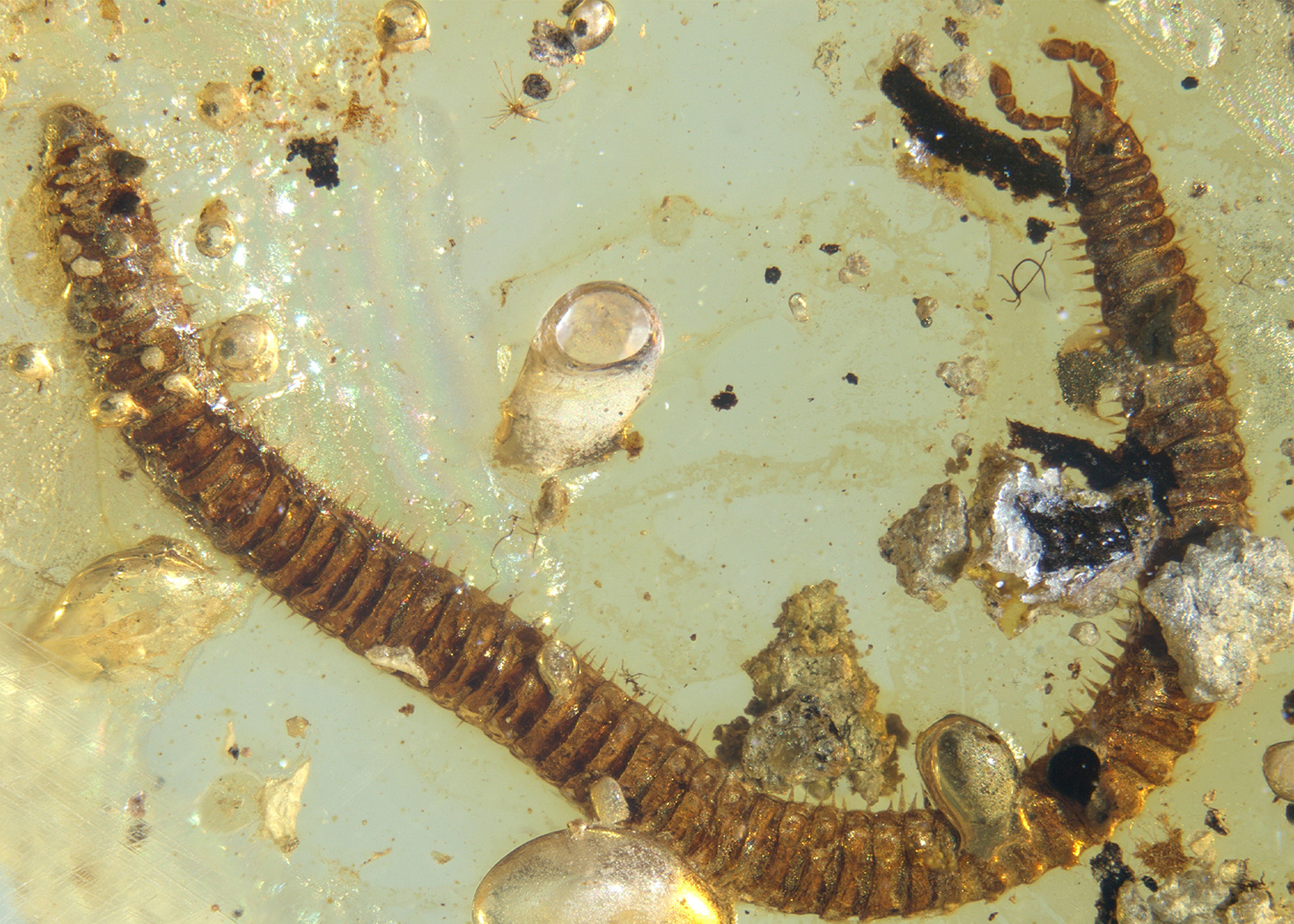Abstract
Siphonophora hui Jiang et al., 2019, known from the mid-Cretaceous Burmese amber, is the first formally described fossil species of the extant myriapod family Siphonophoridae. Here we re-study this species using confocal laser scanning microscopy (CLSM) on the basis of three new specimens from the same deposit. A comparison between the fossil and extant species of Siphonophora is given and several new morphological details are discussed.
References
- Attems, C.M.T. (1930) Myriopoden der Kleinen Sunda-Inseln, gesammelt von der Expedition Dr. Rensch. Mitteilungen aus dem Zoologischen Museum in Berlin, 16 (1), 117–184. https://doi.org/10.1002/mmnz.19300160103
- Attems, C.M.T. (1938) Die von Dr. C. Dawydoff in französisch Indochina gesammelten Myriopoden. Mémoires du Muséum National d’Histoire Naturelle, (N. S.), 6 (2), 187–353.
- Azar, D., Perrichot, V., Neraudeau, D. & Nel, A. (2003) New psychodid flies from the Cretaceous ambers of Lebanon and France, with a discussion about Eophlebotomus connectens Cockerell, 1920 (Diptera, Psychodidae). Annals of the Entomological Society of America, 96, 117–127. https://doi.org/10.1603/0013-8746(2003)096[0117:NPFTCA]2.0.CO;2
- Golovatch, S.I. (1991) On a small collection of millipedes (Diplopoda) from northern Pakistan and its zoogeographic significance. Revue Suisse de Zoologie, 98 (4), 865–878. https://doi.org/10.5962/bhl.part.79815
- Jiang, X., Shear, W.A., Hennen, D.A., Chen, H.M. & Xie, Z.C. (2019) One hundred million years of stasis: Siphonophora hui sp. nov. the first Mesozoic sucking millipede (Diplopoda: Siphonophorida) from mid-Cretaceous Burmese amber. Cretaceous Research, 97, 34–39. https://doi.org/10.1016/j.cretres.2019.01.011
- Loomis, H.F. (1936) Three new millipeds of the order Colobognatha from Tennessee, Texas, and lower California, with records of previously known species. Proceedings of the United States National Museum, 83 (2989), 361–368. https://doi.org/10.5479/si.00963801.83-2989.361
- Loomis, H.F. (1961) New and previously known millipeds of Panama. Proceedings of the United States National Museum, 113 (3454), 77–123. https://doi.org/10.5479/si.00963801.113-3454.77
- Loomis, H.F. (1970) Millipeds of St. John, U.S. Virgin Islands, and a new species from Puerto Rico. Florida Entomologist, 53 (3), 129–134. https://doi.org/10.2307/3493357
- Loomis, H.F. (1972) Millipeds from the atlantic lowlands of Costa Rica. Florida Entomologist, 55 (3), 185–206. https://doi.org/10.2307/3493145
- Mao, Y.Y., Liang, K., Su, Y.T., Li, J.G., Rao, X., Zhang, H., Xia, F.Y., Fu, Y.Z., Cai, C.Y. & Huang, D.Y. (2018) Various amberground marine animals on Burmese amber with discussions on its age. Palaeoentomology, 1 (1), 91–103. https://doi.org/10.11646/palaeoentomology.1.1.11
- Mauriès, J.P. (1980) Diplopodes Chilognathes de la Guadeloupe et ses dépendances. Bulletin du Muséum National d’Histoire Naturelle, 4 (2), 1159–1111.
- Read, H.J. & Enghoff, H. (2009) The order Siphonophorida – A taxonomist’s nightmare? Lessons from a Brazilian collection. Soil Organisms, 81 (3), 543–556.
- Read, H.J. & Enghoff, H. (2018) Siphonophoridae from Brazilian Amazonia Part 1—The genus Columbianum Verhoeff, 1941 (Diplopoda, Siphonophorida). European Journal of Taxonomy, 477, 1–23. https://doi.org/10.5852/ejt.2018.477
- Read, H.J. & Enghoff, H. (2019) Siphonophoridae from Brazilian Amazonia. Part 2—Two new tree-climbing species of the genus Siphonophora, including one showing pilosity polymorphism (Diplopoda, Siphonophorida). European Journal of Taxonomy, 496, 1–26. https://doi.org/10.5852/ejt.2019.496
- Ross, A.J. (2019) Burmese (Myanmar) amber checklist and bibliography 2018. Palaeoentomology, 2 (1), 22–84. https://doi.org/10.11646/palaeoentomology.2.1.5
- Ross, A.J. (2021) Supplement to the Burmese (Myanmar) amber checklist and bibliography, 2020. Palaeoentomology, 4 (1), 57–76. https://doi.org/10.11646/palaeoentomology.4.1.11
- Shelley, R.M. (1996) A description of Siphonophora portoricensis Brandt (Diplopoda: Siphonophorida: Siphonophoridae), with a catalogue of ordinal representatives in the New World. Journal of Natural History, 30 (12), 1799–1814. https://doi.org/10.1080/00222939600771051
- Shi, G.H., Grimaldi, D.A., Harlow, G.E., Wang, J., Wang, J., Yang, M.C., Lei, W.Y., Li, Q.L. & Li, X.H. (2012) Age constraint on Burmese amber based on U-Pb dating of zircons. Cretaceous Research, 37, 155–163. https://doi.org/10.1016/j.cretres.2012.03.014


